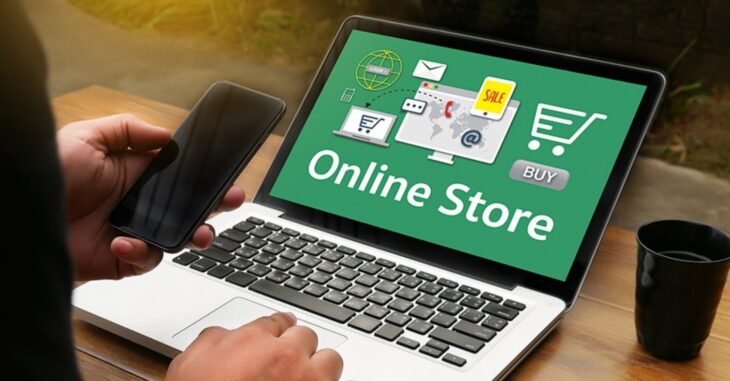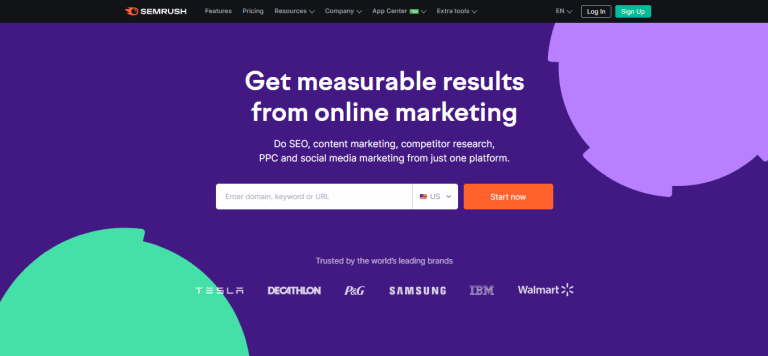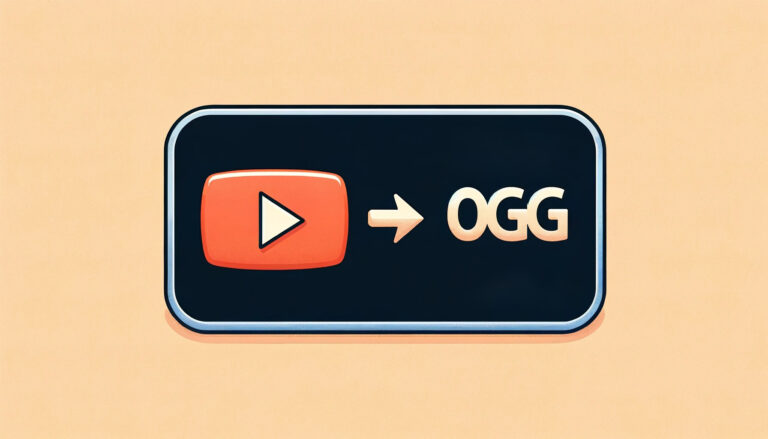So, you’ve got this amazing idea to start your very own online store, right? That’s awesome! But where do you begin, you ask? Don’t worry; I’ve been there too, and I’m here to help you navigate the exciting journey of starting your own online store.
In this step-by-step guide, we’ll walk through the basics, break down the process into simple chunks, and get you well on your way to turning your passion into a thriving online business. So, grab a cup of coffee, get comfy, and let’s figure out the world of online entrepreneurship together!
Table of Contents
ToggleStep 1: Laying the Foundation
Research Your Niche
Begin your venture by thoroughly researching your intended market. Look into current trends, assess customer demands, and evaluate the competition in your chosen niche. Utilizing tools like Google Trends and social media platforms can offer invaluable insights into market dynamics.
This research helps in identifying gaps in the market that your business can fill. Also, analyze your competitors’ strengths and weaknesses to understand what sets your business apart.
Define Your Target Audience

Knowing your target audience is critical for the success of your online store. Determine who your potential customers are, what they need or desire, and what factors influence their buying decisions. This understanding aids in customizing your product offerings and marketing strategies to resonate with your audience.
Consider creating buyer personas, which are fictional representations of your ideal customers, to better visualize and understand your audience.
Step 2: Developing A Business Plan
Outline Your Business Goals
Setting clear and achievable business goals lays the foundation for your online store’s success. These goals might include specific sales targets, strategies for customer acquisition, or plans for long-term growth. Having well-defined goals helps in focusing your efforts and measuring progress.
Ensure that your goals are specific, measurable, achievable, relevant, and time-bound (SMART).
Financial Planning

Developing a comprehensive budget is crucial for your business’s financial health. Factor in all startup costs, ongoing operational expenses, and anticipated revenue. Costs to consider include web hosting, inventory purchases, marketing expenses, and shipping fees.
Additionally, plan for contingencies and unexpected expenses, ensuring that your business remains financially stable.
Alongside these considerations, it’s also beneficial to explore effective strategies for safeguarding your venture against potential financial risks.
Step 3: Choosing the Right Products
Choosing the right products is pivotal to your store’s success. Opt for products that align with your niche and appeal to your target audience. When selecting products, consider factors like profitability, market demand, supply chain logistics, and shipping costs.
Also, think about the unique selling proposition of your products and how they will stand out in the market.
Finding Suppliers
If you are not manufacturing products yourself, sourcing reliable suppliers is essential. Research various suppliers to assess their quality, reliability, cost-effectiveness, and ethical practices.
Establishing strong relationships with good suppliers ensures a steady supply of quality products and can lead to favorable terms and discounts.
Step 4: Building Your Online Store
Select an E-commerce Platform
Choosing the right e-commerce platform is a decision that impacts the functionality and scalability of your online store. Popular platforms like Shopify, WooCommerce, and Magento offer a range of features and tools.
When selecting a platform, consider factors such as ease of use, customization options, scalability, payment processing integrations, and customer service support.
Customization and Branding
Your online store should be a reflection of your brand identity. Customize the design to incorporate your brand’s colors, logo, and aesthetic style, creating a visually appealing and cohesive shopping experience. Good branding enhances customer recognition and loyalty, setting your store apart in a crowded marketplace.
Step 5: Setting Up Your Store
Product Listings

Your product listings are vital for attracting and informing customers. Create detailed, accurate listings with high-quality images and informative descriptions. Include essential product information like price, specifications, sizes, colors, and any unique features.
Good product listings enhance customer trust and reduce the likelihood of returns and dissatisfaction.
Payment Processing

An efficient and secure payment process is essential for customer satisfaction. Set up a reliable payment system that supports various payment methods, including credit cards, digital wallets, and bank transfers.
Most e-commerce platforms offer integrated solutions like PayPal, Stripe, or Square, which provide secure and convenient payment options for customers.
Shipping and Fulfillment
Decide on a practical and cost-effective shipping strategy. Consider offering various shipping options, such as free shipping, flat-rate shipping, or calculated shipping based on location. Efficient order fulfillment and a clear return policy are also crucial for customer satisfaction and repeat business.
Step 5: Launching and Marketing Your Store
Test Your Store
Before launching, it’s imperative to thoroughly test your website. Check for technical glitches, ensure the checkout process is smooth, and verify that all links and functions are working correctly. A well-functioning website creates a positive first impression and is crucial for retaining customers.
Create a Launch Plan
Develop a comprehensive launch strategy that outlines specific activities and promotions. Set a launch date and plan initial marketing efforts to create buzz around your store. Consider offering special promotions or discounts to attract early customers and generate interest.
Developing a Marketing Strategy
A robust marketing strategy should include a blend of search engine optimization (SEO), content marketing, social media marketing, and email marketing. Use SEO techniques to enhance your store’s visibility in search engine results.
Create engaging and relevant content that appeals to your target audience and establishes your expertise in your niche.
Additionally, embracing innovative technology strategies can further propel your store’s growth, offering unique advantages in today’s competitive digital marketplace.
Social Media and Advertising

Social media platforms are powerful tools for connecting with your audience and promoting your products. Develop a social media presence that aligns with your brand and engages your target audience.
Paid advertising on platforms like Facebook, Instagram, or Google can help reach a broader audience and drive traffic to your store.
How to Build Customer Relationships?
Fostering strong customer relationships is key to building a loyal customer base. Engage with your customers through personalized emails, responsive customer service, and regular newsletters.
Encourage customer reviews and feedback to build trust and credibility for your brand.
Step 6: Optimizing Your Online Store
An intuitive and user-friendly website is essential for customer retention. Ensure your site has a clear menu, effective search functionality, and logically organized categories. A well-structured website makes it easier for customers to browse and find products, leading to increased sales and customer satisfaction.
Mobile Optimization
In today’s mobile-first world, having a mobile-optimized website is non-negotiable. Ensure your online store is responsive, providing a seamless shopping experience on smartphones and tablets.
Mobile optimization not only improves user experience but also contributes to better search engine rankings.
Loading Speed
Website loading speed significantly impacts customer experience and SEO. Optimize your site for speed by compressing images, leveraging browser caching, and minimizing server response time. Fast-loading websites reduce bounce rates and enhance the overall shopping experience.
Tracking Performance

Utilizing analytics tools like Google Analytics is crucial for understanding your store’s performance. Monitor key metrics such as traffic, conversion rates, and customer behavior to identify trends and areas for improvement. Data-driven decisions help in refining your marketing strategies and enhancing customer experience.
On the other hand, you have to be sure that all data in your company is safe.
Furthermore, actively seek and analyze customer feedback. Use surveys, reviews, and direct communication to gather insights about your products and services. This feedback is invaluable for making informed improvements and fostering customer loyalty.
Advanced Marketing Techniques
| Strategy | Focus Area | Key Actions |
|---|---|---|
| Email Marketing | Building an Email List | Encourage visitors to subscribe with incentives like discounts or exclusive content. Use sign-up forms on the homepage, during checkout, or on blog posts. |
| Email Marketing | Email Campaigns | Engage subscribers with regular campaigns, including newsletters, product updates, and personalized promotions. Segment email list based on customer behavior or preferences. |
| Content Marketing and SEO | Blog and Content Creation | Develop a content strategy including blogs, how-to guides, and product reviews. Quality content attracts organic traffic and positions your brand as an authority. |
| Content Marketing and SEO | SEO Strategies | Invest in SEO to improve online visibility. Use relevant keywords, create quality backlinks, and maintain a clear site structure. Regularly update content for better search engine ranking. |
Scaling Your Business
As your business grows, consider broadening your product range. This can attract a wider audience and meet the evolving needs of your current customers. Regularly assess market trends and customer feedback to identify new product opportunities.
Collaborating with other brands or influencers can open up new markets and add credibility to your store. Such partnerships can be mutually beneficial and lead to increased exposure and sales.
Managing Growth
Effective management of growth is crucial for long-term success. This may involve upgrading your hosting plan, automating certain business processes, or expanding your team. Proper planning and resource management ensure your business can handle increased demand without compromising on quality or customer service.
Pursue growth strategies that are sustainable in the long run. Keep a close eye on your financials, manage inventory efficiently, and continue prioritizing customer satisfaction. Sustainable growth is about balancing expansion with stability, ensuring the longevity of your business.
FAQs
Can I start an online store without any technical skills?
Yes, you can start an online store without technical skills. Many e-commerce platforms like Shopify and Wix offer user-friendly interfaces with drag-and-drop features, making it easy for beginners.
These platforms also provide extensive support and tutorials to guide you through the process.
How much capital do I need to start an online store?
The initial capital required varies based on several factors the type of products, the chosen platform, and marketing strategies. A basic online store can be started with as little as a few hundred dollars, covering the cost of web hosting, domain registration, and minimal inventory.
However, more comprehensive stores or those with larger inventories will require more capital.
What are the legal requirements for starting an online store?
Legal requirements vary by location but generally include registering your business, obtaining necessary licenses or permits, and understanding tax obligations. It’s also important to have clear terms and conditions, a privacy policy, and a return policy on your website.
Consulting a legal expert is advisable to ensure compliance.
How do I handle shipping and logistics for my online store?
You can handle shipping and logistics by partnering with shipping companies or using fulfillment services. Many e-commerce platforms offer integrations with shipping providers. You can also set up a system for order processing, packaging, and shipping if you prefer to handle it in-house.
Consider your product type, shipping costs, and delivery times when planning your logistics.
Is it better to sell niche products or a wide range of products?
The choice between selling niche products or a wide range depends on your business goals and market research. Niche products can cater to a specific audience and face less competition, while a wide range offers more diversity and potential customer appeal.
Analyze your target market and competition to decide which approach suits your business model best.
How can I ensure my online store stands out in a competitive market?
To stand out, focus on unique branding, exceptional customer service, and a strong online presence. Offer high-quality, distinctive products, or unique value propositions. Engaging in effective marketing strategies, leveraging social media, and providing a personalized shopping experience can also help differentiate your store in a competitive market.
Summary
Starting and scaling an online store is a multifaceted process that requires dedication, adaptability, and a customer-focused approach. By following this guide, you are equipped with the knowledge and strategies to launch and grow a successful online store.
Always stay abreast of market trends, be ready to adapt, and remember that the customer’s experience is central to your success. With commitment and perseverance, your online store can stand out in the competitive e-commerce landscape.


